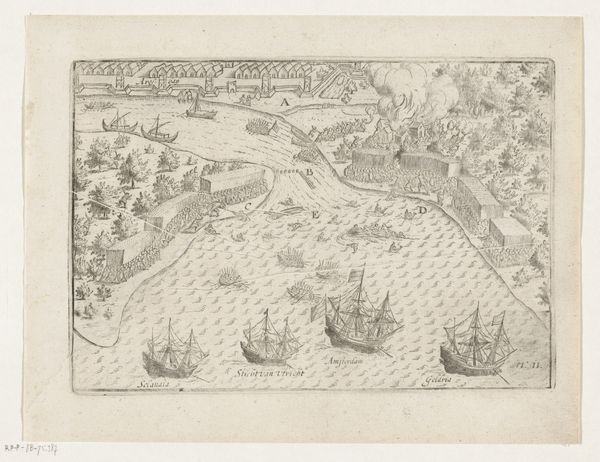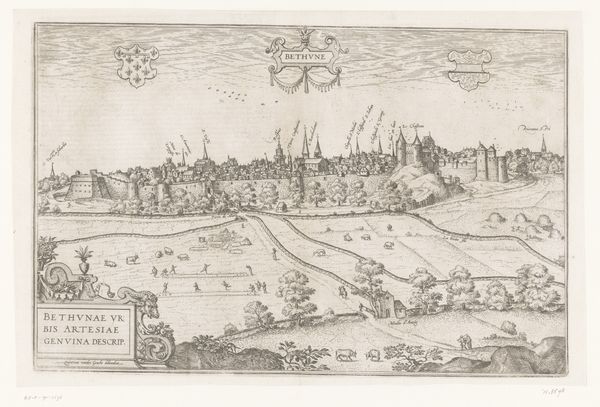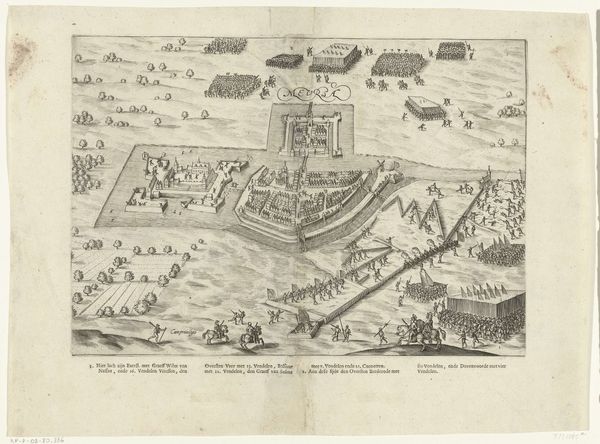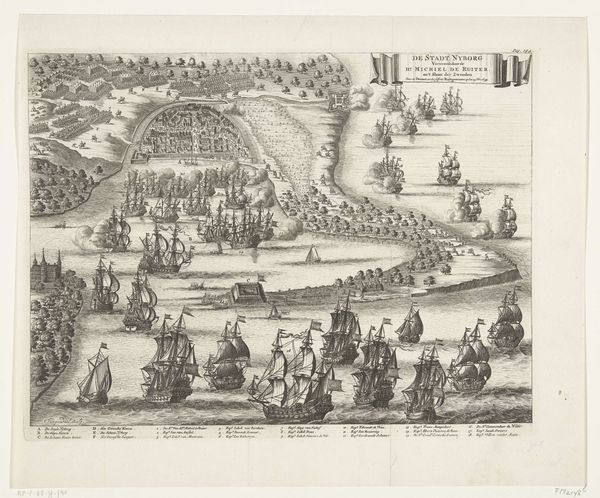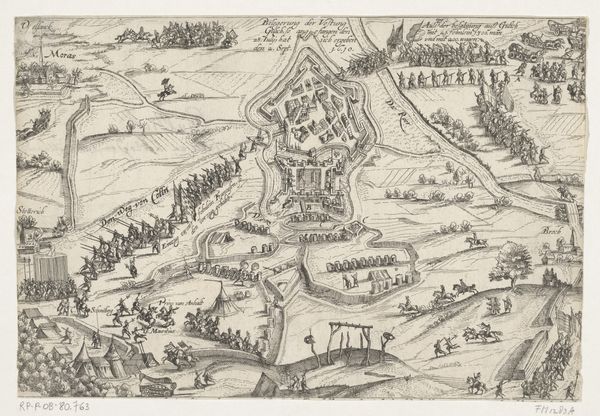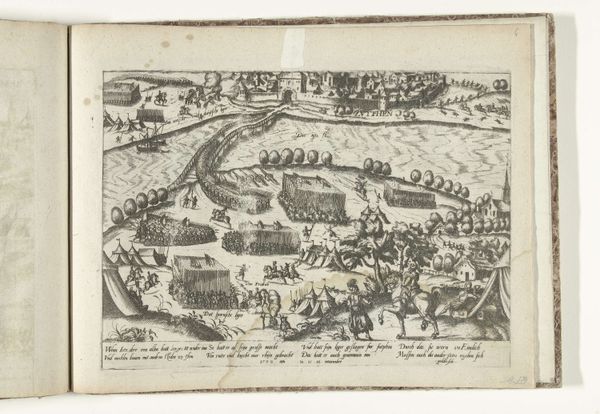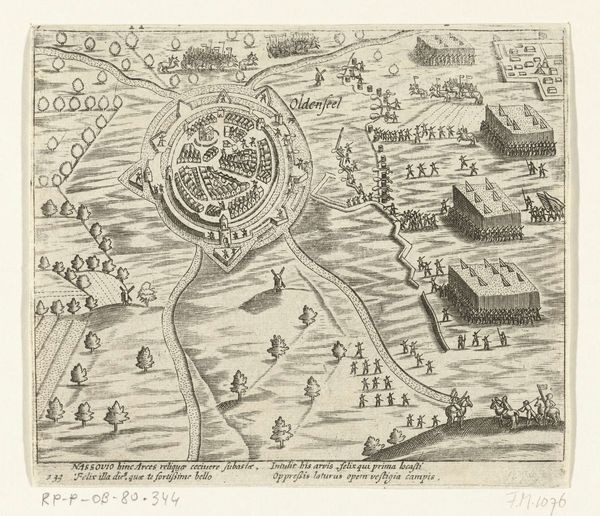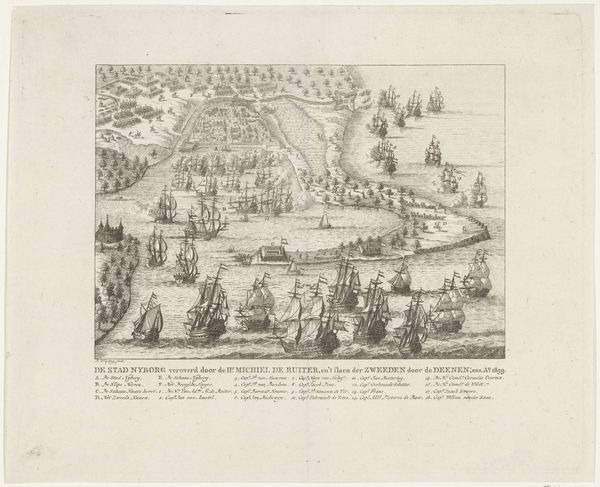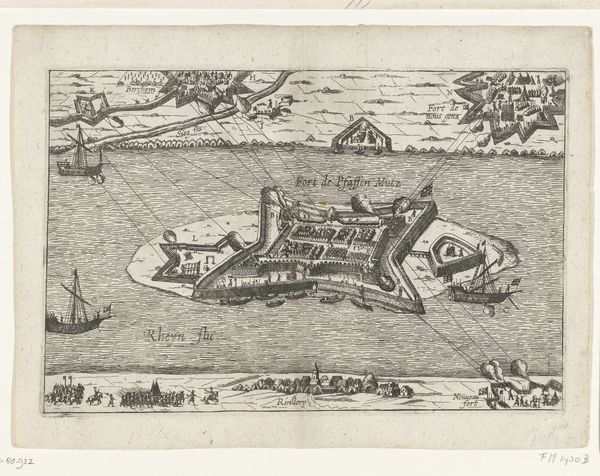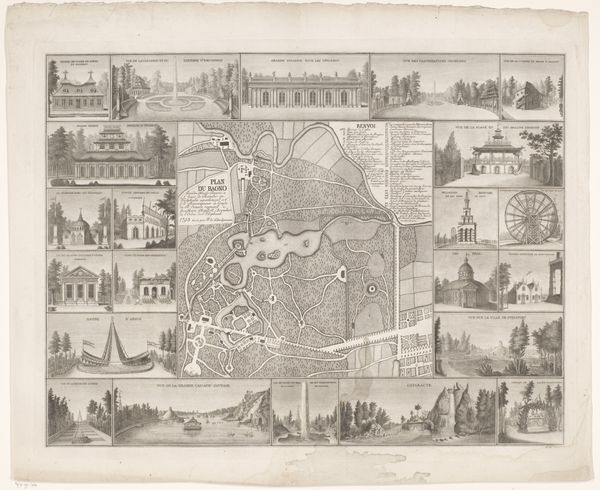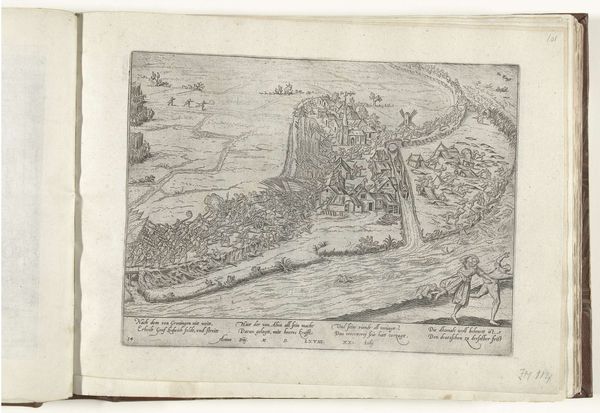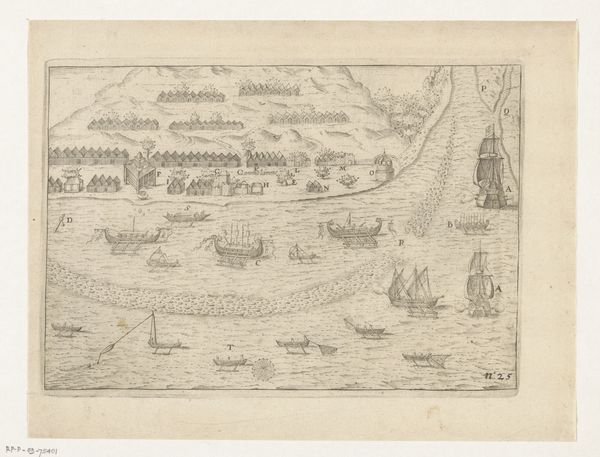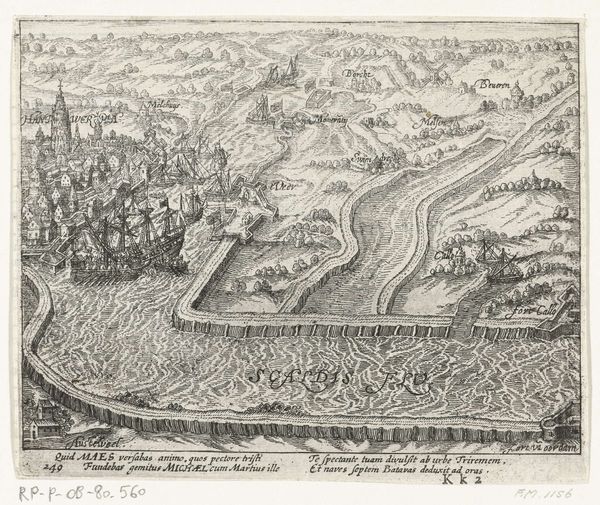
print, engraving
# print
#
pen sketch
#
asian-art
#
old engraving style
#
genre-painting
#
history-painting
#
engraving
Dimensions: height 145 mm, width 215 mm
Copyright: Rijks Museum: Open Domain
Editor: This engraving, "Toernooi te Tuban, 1599," made in the early 1600s by an anonymous artist, depicts a tournament scene. What strikes me is the composition, how the artist managed to fit so many details within a confined space. What catches your eye? Curator: The artist's rendering of space is indeed fascinating. Observe the formal structure: a circular arena is rigorously divided and populated. Consider how the arrangement emphasizes flatness; perspectival recession is suggested, but then negated by the density of the marks. What is the effect of this tension between depth and surface? Editor: It almost flattens the action, turning it into a decorative pattern. I guess it brings forward the relationships between forms and lines rather than telling a realistic story? Curator: Precisely. The emphasis isn't on illusionistic representation, but on the calculated deployment of graphic elements. Look at the repetition of forms—the lances, the figures on horseback, the seated spectators. Do you discern a rhythmic quality in their distribution? Editor: Yes, a very ordered one. It feels almost like a dance, though a structured one. There are no grand gestures. How interesting that all figures participate in a highly codified representation, making the tournament visually accessible. Curator: Precisely. Note how the linearity and the two-dimensionality of the forms reinforce the idea of an ordered space, almost akin to a geometric construct, where even human drama gets formalized and codified. The absence of light and shadow furthers the impression that it isn't narrative. Editor: I see what you mean. By downplaying the depth and narrative, the artwork turns the scene into this beautiful abstract, an orchestration of lines and shapes. It almost transforms the historical event into just forms. Curator: Indeed, this intense awareness of structure and materiality shifts our attention away from the merely descriptive function of the work to its symbolic possibilities and inherent form. Editor: Thank you for showing me this different perspective; seeing the print as an intentional, constructed abstract opens so many interpretive avenues!
Comments
No comments
Be the first to comment and join the conversation on the ultimate creative platform.
